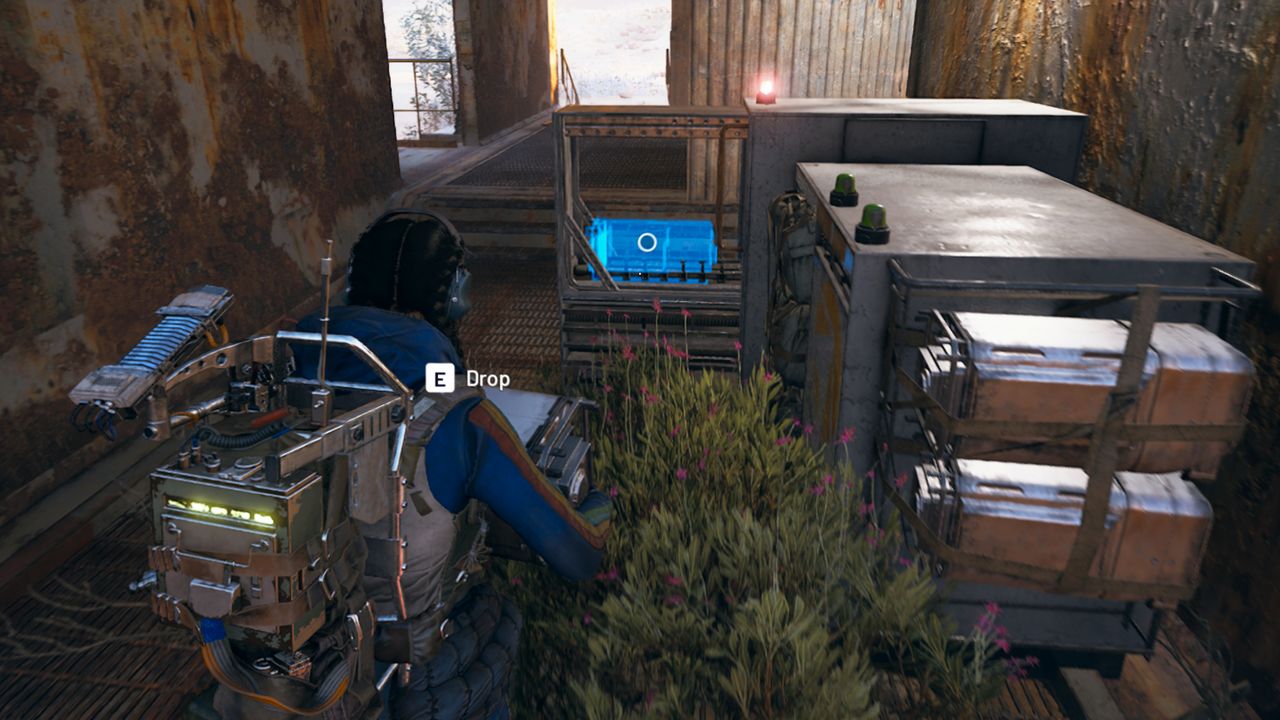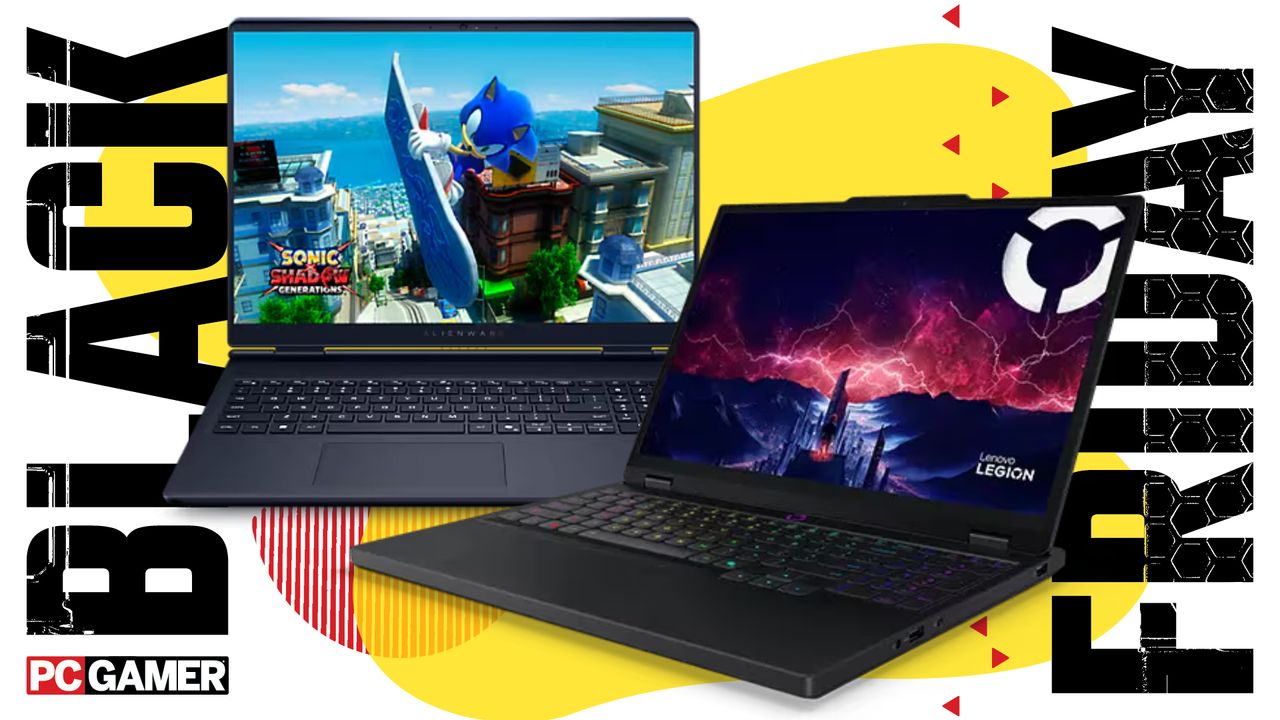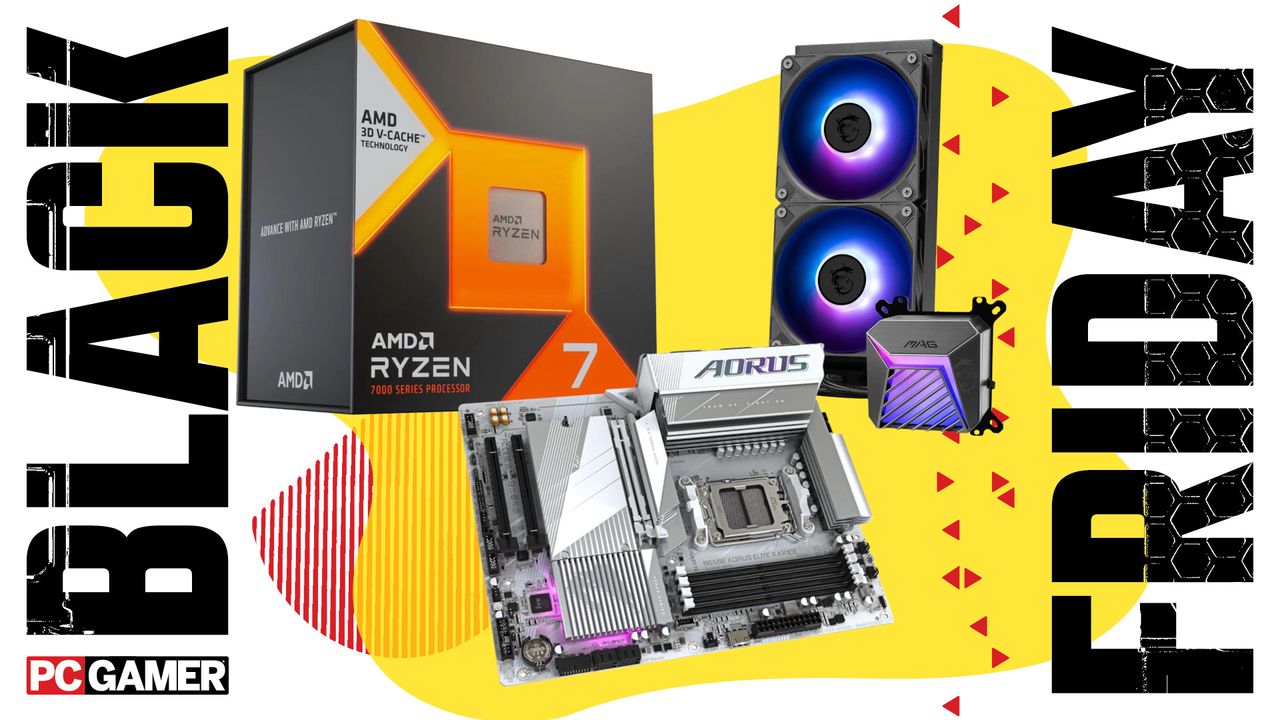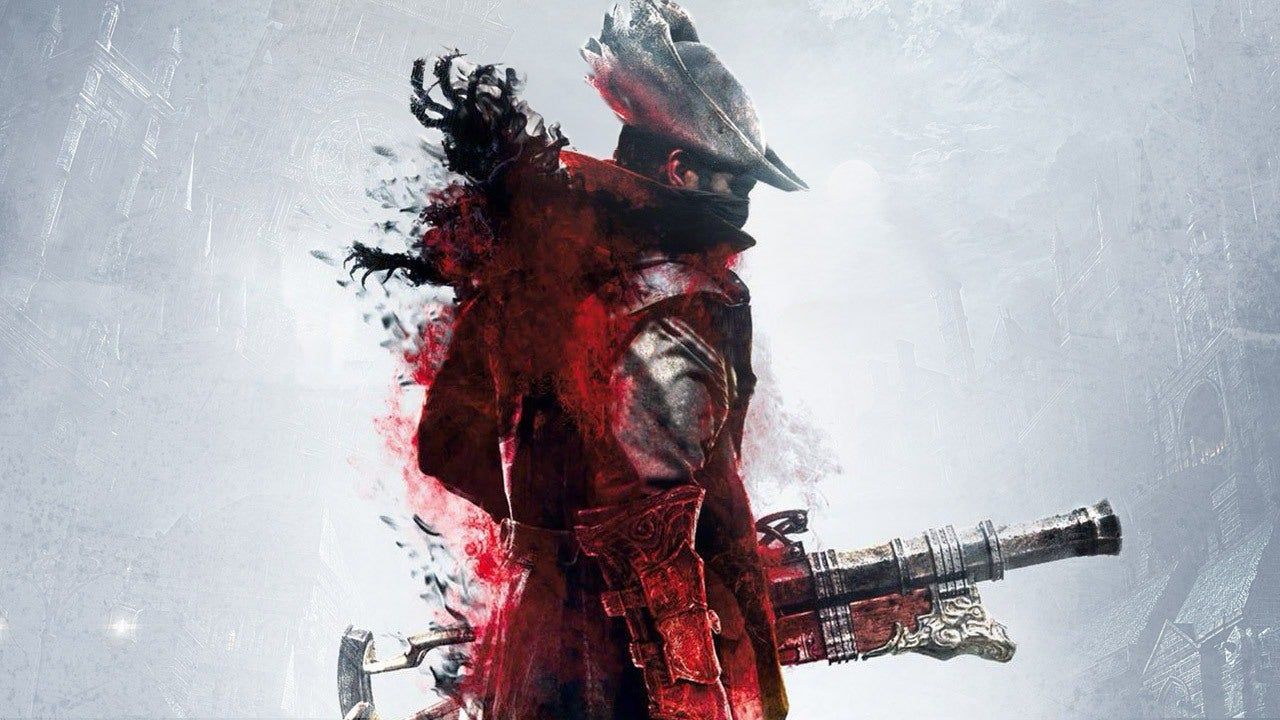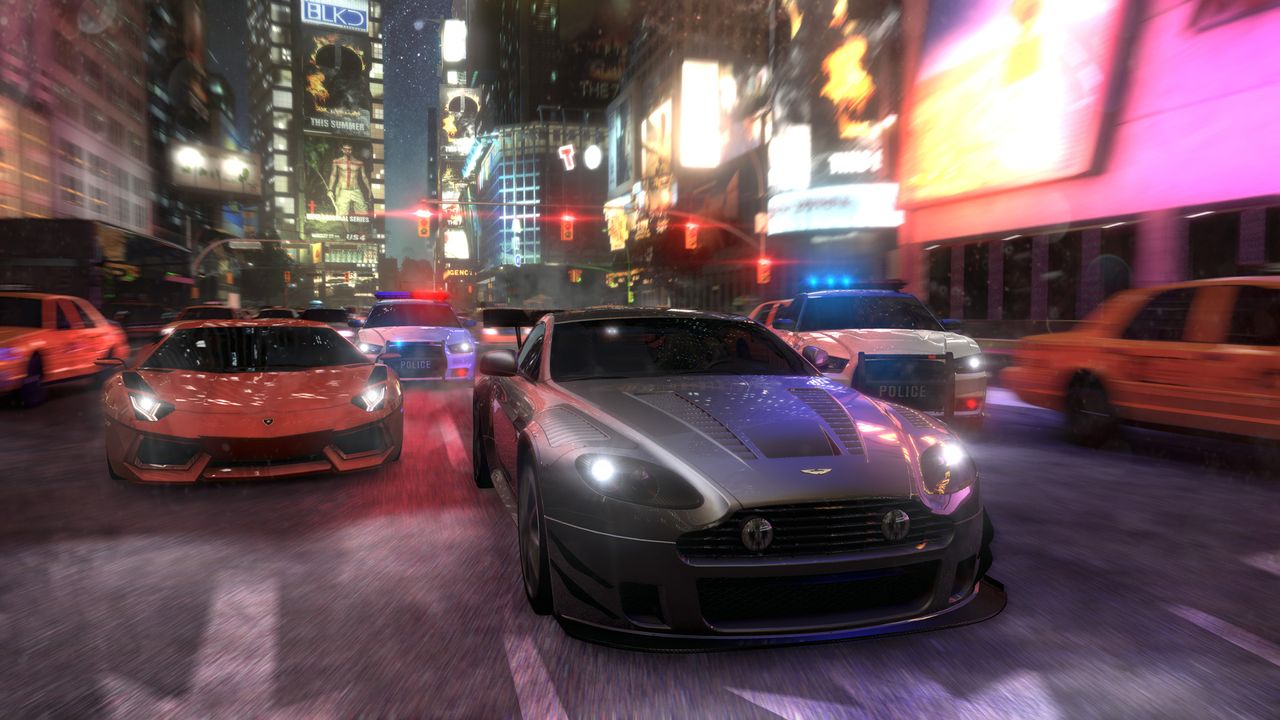Escape from Tarkov director says the launch week's wobbles were 'actual stress testing not only of our servers but also our mind and nerves'
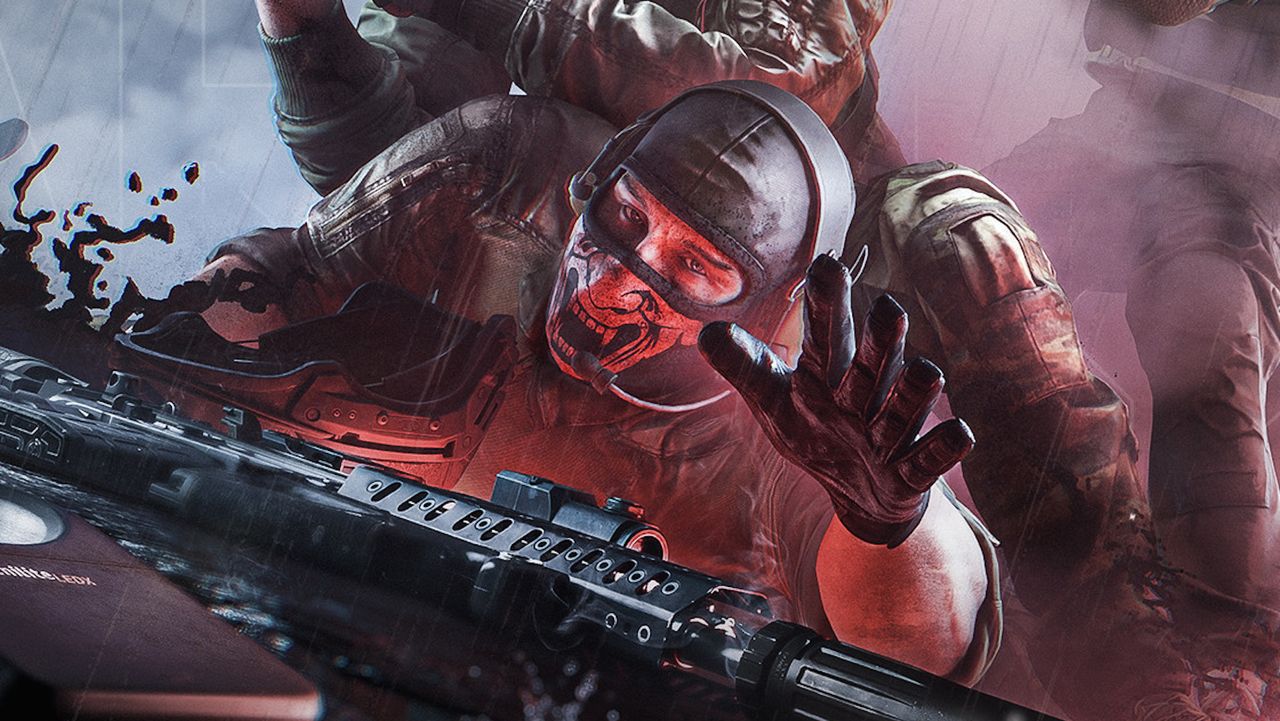

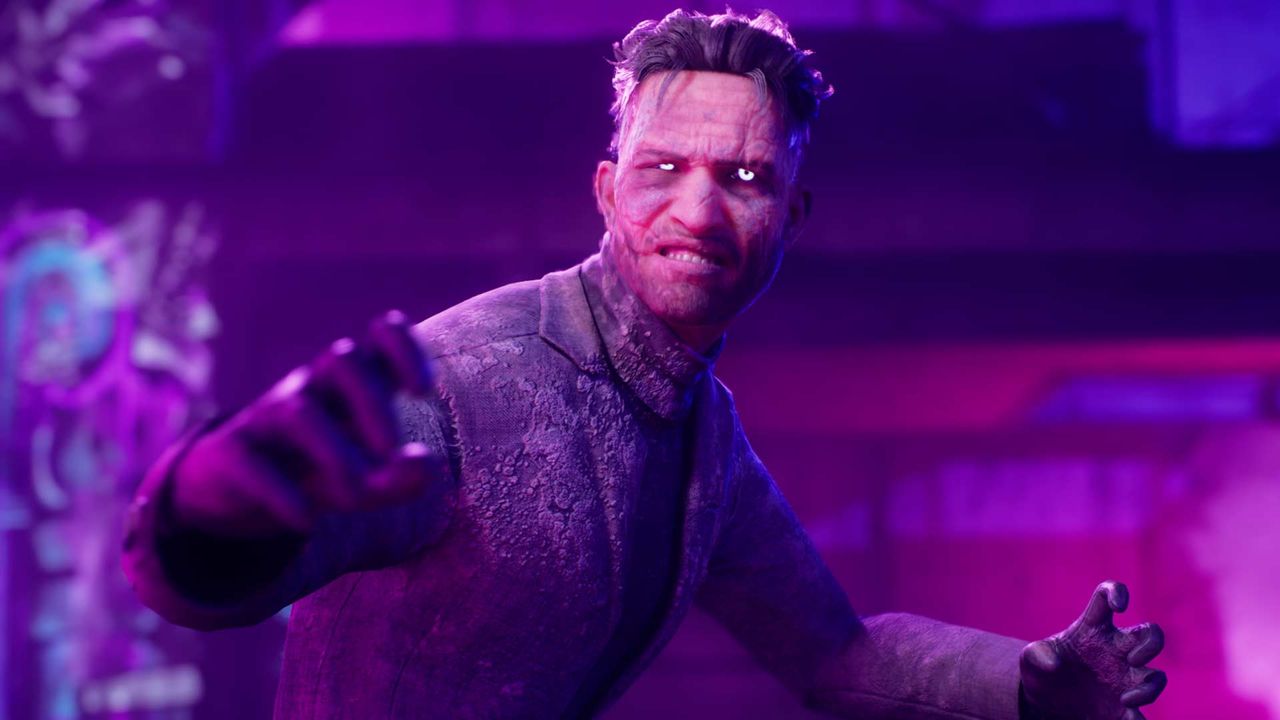
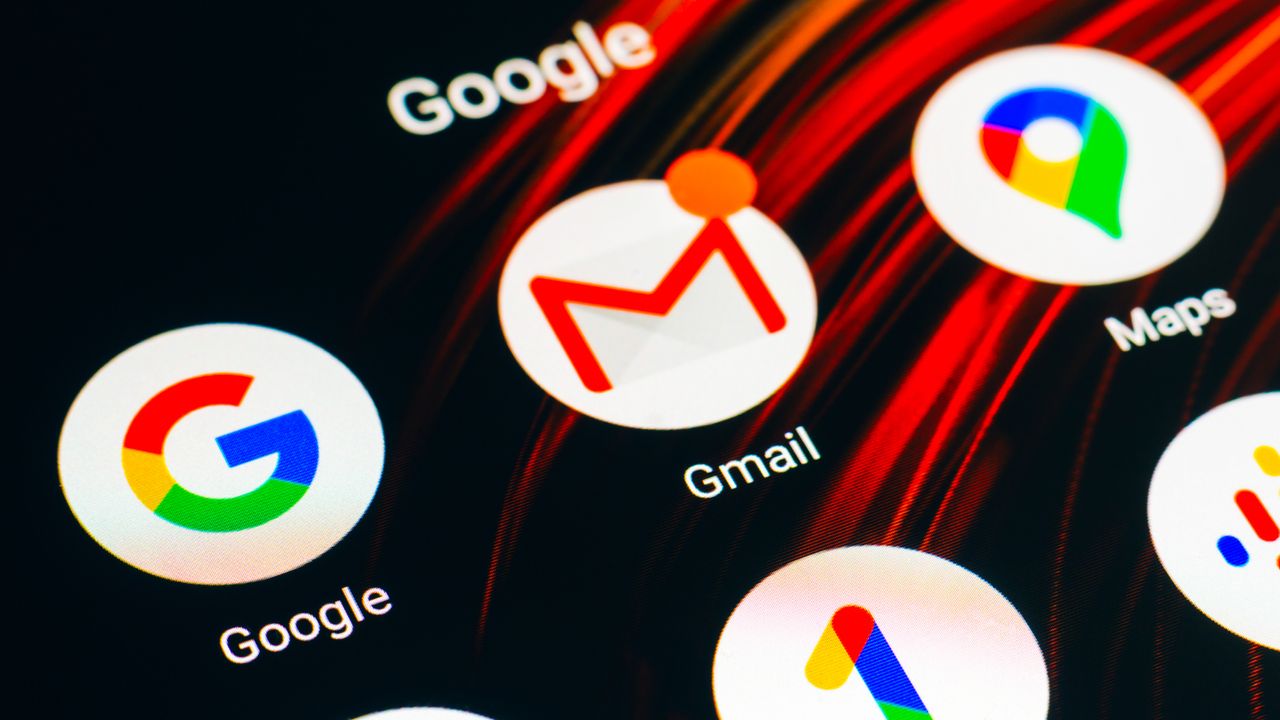
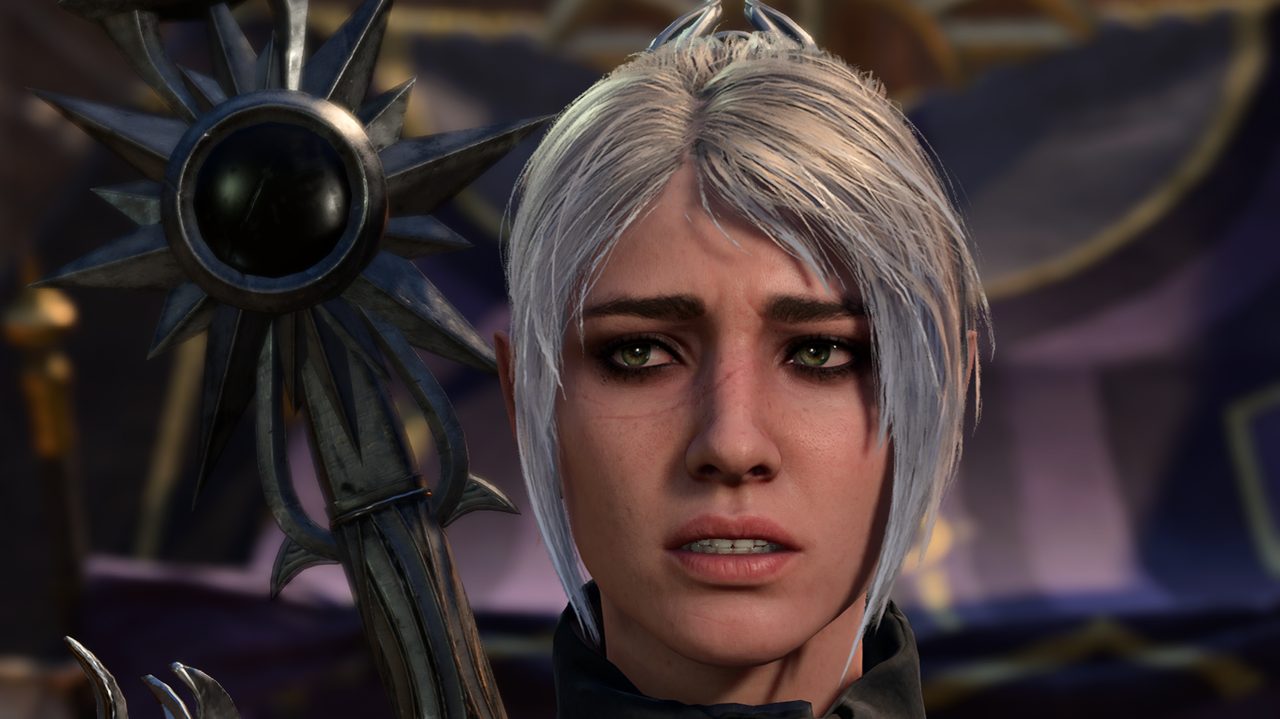
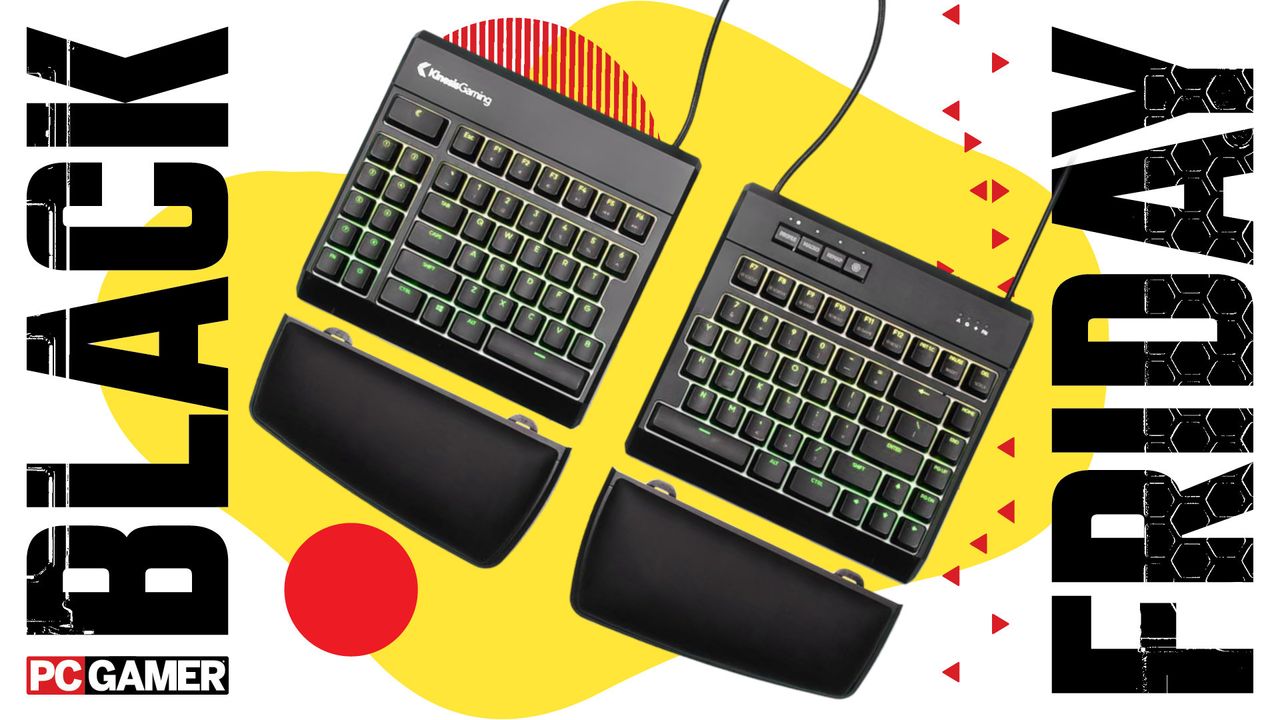
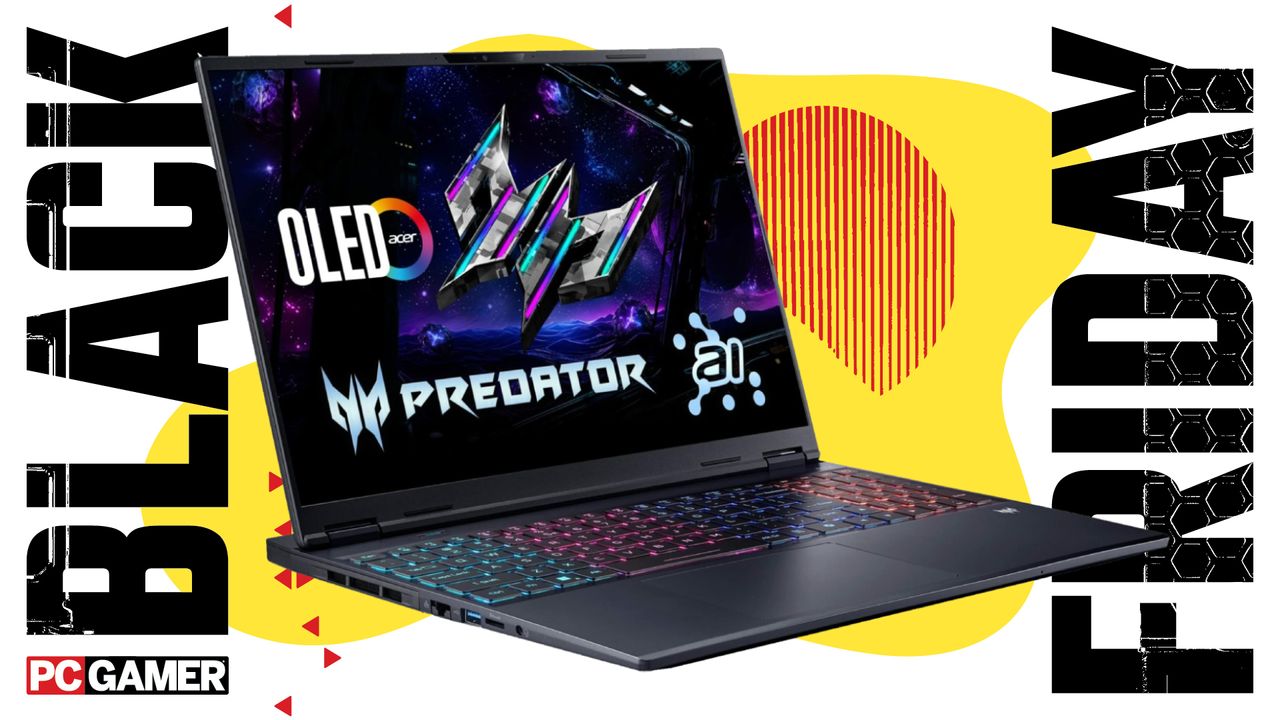

While the whole month of November has basically been filled with deals this year, it's now officially Black Friday week. Already we've found numerous discounts worth checking out, especially on Apple devices. The brand new AirPods Pro 3 have been among them, dropping down to their lowest price yet of $219.99 across a variety of retailers.
This is a $29.01 discount from their usual price of $249, which is a nice little deal to jump on for these Apple earbuds. If you've had them in mind as a gift for the holidays this year for someone you know, or have just had your eye on them for yourself, now's the time to make a move on them.
Apple's new Pro earbuds certainly seem like a worthy investment, too, especially if you have travel plans over the holidays. In terms of noise cancellation, the AirPods Pro 3 remove twice as much background noise in comparison to their predecessor. They also boast a battery life that can last up to eight hours with ANC on or up to 10 in Transparency mode which, again, is good news for those getting ready to go on a long trip.
There's plenty more still to come from Apple this week as well. The company recently announced its Black Friday plans, with its sale running from Friday, November 28 through Cyber Monday. There's no need to wait for then, though. Amazon has already dropped some excellent Apple deals as part of its Black Friday sale event that are well worth checking out right now.
For more information on what other retailers are offering up over Black Friday, check out our breakdown of Black Friday 2025. Here, we've gathered up details on which sales are live now or start soon, alongside information on what deals we're expecting to see this year.
Hannah Hoolihan is a freelancer who writes with the guides and commerce teams here at IGN.

Danel Craig reunites with writer-director Rian Johnson for Wake Up Dead Man: A Knives Out Mystery, the third installment in their murder mystery-comedy franchise following Knives Out and Glass Onion.
In Wake Up Dead Man, the renowned (and always nattily attired) detective Benoit Blanc (Daniel Craig) investigates a seemingly impossible murder that has rocked a small upstate New York town. The prime suspect is a young Catholic priest, Father Jud Duplenticy (Josh O’Connor), the assistant to charismatic firebrand Monsignor Jefferson Wicks (Josh Brolin) at Our Lady of Perpetual Fortitude.
Working with local police chief Geraldine Scott (Mila Kunis), Blanc doubts that Father Jud, a former boxer who turned to the cloth after a tragedy in the ring, is the true killer, casting a wider net that includes parishioners Martha Delacroix (Glenn Close), groundskeeper Samson Holt (Thomas Haden Church), lawyer Vera Draven (Kerry Washington), aspiring politician Cy Draven (Daryl McCormack), town doctor Nat Sharp (Jeremy Renner), best-selling author Lee Ross (Andrew Scott), and concert cellist Simone Vivane (Cailee Spaeny).
Here’s what Rian Johnson and Daniel Craig recently told me about making Wake Up Dead Man and telling a sincere story about religious faith. (This interview has been edited for clarity.)
IGN: Rian, can you talk about the decision to write a story about faith and to write a character like Father Jud from that point of view? It's not ironic, you're not mocking faith.
Rian Johnson: I didn't grow up Catholic, but I grew up Protestant and I grew up very, very Christian. It was something that was really personal to me. It was a big part. My relationship with Christ was a big part of my identity when I was growing up and up through my early twenties and I'm no longer a believer, but it's something that I have a lot of very deep, complicated feelings about and it's something that was a little bit scary, the notion of, and that's what attracted us to it, I think.
The notion of actually having a real conversation about faith that wasn't reductive or didactic, but was actually kind of talking about it in the context of a big, entertaining, fun, murder mystery, that's really meant as a big tent thing for audiences to come and enjoy. That seemed like a great challenge.
I think for me, the reason I felt like I could even take that leap is because of my own personal grounding in it. That meant I really had skin in the game, in terms of wanting it to feel like it was, like I said, talking about that topic as opposed to talking at that topic, I guess.
IGN: Daniel, I think people might be surprised that, outside of the first shot of the movie, we don't see Benoit Blanc for about an hour into the movie. What was your reaction when you read the script?
Daniel Craig: Feels like two hours.
Rian Johnson: That's not about an hour. It's the first act.
Daniel Craig: Listen, I make up for it. You get enough of me in the next two-thirds of the movie, so it's all, it's not a problem. I approach these things like I always do. I don't want to read the script. I try and separate myself from the script when I read it because I want to read it with sort of outside eyes. Obviously, I read it looking at my part. Obviously I read it with Benoit in mind. But the film, the spine of the movie is the relationship between Father Jud and Benoit and we need to get to know him before Benoit can come in and start overacting.
IGN: I really did love that relationship between those two characters because one is a person driven by faith and then your character is obviously “just the facts”. Did you and Josh discuss the relationship much before you were filming?
Daniel Craig: I think the conversation was, I mean, in a way, Rian talks about (Benoit’s) background in a way, sort of put it there, that there was probably a very religious upbringing and that it was a response to that and then the move towards science and fact. And so as Rian said, it was really just important to make that an adult conversation and the joy of it being that there's a revelation for Blanc in the story.
I mean we're always trying to discuss it, figure it out, but there's no one conversation I can think of. It's one of many that you just sort of like, how about this? How about this? How about this? You're just trying to throw as many ideas into it as possible.
Rian Johnson: I think this was maybe my favorite part of this entire process. That first conversation between Blanc and Jud and the church, where they kind of really go head-to-head with their points-of-view. And this is an example of the type of collaboration that we have during it.
That was a scene that we actually dove into together, when it was still in the script phase, and Daniel had the incredibly perceptive instinct that I wrote it as a much softer scene between the two of them. And it was Daniel who was like, "I really think the harder you define these two, especially Blanc, the harder he comes in against faith, the more their kind of straight head-to-head in that first scene, the stronger their relationship will end up being."
And he was so right and so it was going back and forth and figuring out how far can we push it in terms of how far Blanc goes? That for me is part of the pleasure of making movies with this guy. It really is. I don't know. It is a joyful process of seeing how far we can push it and how we can make it the best it can be.
IGN: Daniel, Josh O'Connor is rumored to be up for the role of James Bond. What would you think of Josh as Bond?
Daniel Craig: I have to iron something out here. I started that rumor.
IGN: You started that rumor?
Rian Johnson: Maliciously. Maliciously.
Daniel Craig: Completely malicious. Let's hope he is.
IGN: Oh my God. Awesome. Thank you so much guys and I loved the movie.
Daniel Craig: Thank you.
Rian Johnson: Thanks a lot.
Wake Up Dead Man: A Knives Out Mystery will be in select theaters November 26 and premieres on Netflix December 12.
In his Wake Up Dead Man: A Knives Out Mystery review, IGN’s Carlos Morales deemed the film “a solid third entry for Benoit Blanc, finally delivering the classic-style mystery the series has sorely needed.”

The first part of Stranger Things Season 5 is on its way in just a couple days — so naturally, it was the perfect time for Netflix to drop the trailer for the first three episodes, which will be released on the platform on November 26.
To be fair, we’ve seen most of the footage in the trailer, below, before — however, there’s all-new shots of Joe Keery’s Steve driving himself, Dustin, Nancy, and Jonathan into a portal, which seems to lead to the Upside Down itself, presumably to find and kill Vecna, the story’s central villain. Pretty interesting stuff there. We definitely want to know more about that.
STRANGER THINGS 5 VOL. 1
— Netflix (@netflix) November 23, 2025
THIS WEDNESDAY
8PM ET / 5PM PT
DO YOU COPY pic.twitter.com/nG4Y0JwycL
Netflix also recently released the first five minutes of the season, and got Ross and Matt Duffer, co-creators and showrunners of the series, to open up about where the characters are at as we head into the final season of the decade-long show.
“I think what's unique about this season is that it starts a little bit in chaos because our heroes ultimately lost at the end of Season 4,” Ross explained about the season’s pacing. “We usually set up their normal life and how they’re going about school, and then we introduce the supernatural element. But in this case, this season is sprinting from the start.”
Matt explained that it’s all going breakneck speed for a reason. He added: “They’re not experiencing normal life. Nothing in Hawkins is normal anymore... their movement is restricted, and there are Big Brother cameras everywhere. So not only are they active — their everyday, normal lives are anything but.”
The final season of Stranger Things has been broken up into three parts. The first section of three episodes drops the day before Thanksgiving, the second set of three episodes arrives for Christmas, and the finale episode of the series will premiere (both on the streamer and in theaters) on New Year’s Eve.
It’ll be interesting to see where the story of this series ends after all this time — but one thing’s for sure: they’re going to go out with a bang.
Lex Briscuso is a film and television critic and a freelance entertainment writer for IGN. You can follow her on Twitter at @nikonamerica.

If you want a gaming PC that can follow wherever you may roam, a gaming laptop is likely your best bet. While desktop parts will usually still beat out a gaming laptop, the best of them offer excellent performance in the latest games. Best of all, some models are able to offer peak performance while still remaining thin and light, like the Razer Blade 16, which is my pick for the all-around best gaming laptop of 2025 so far. As of April 15, these are back in stock after Razer had briefly taken down the direct link to buy the Razer Blade 16 and other laptops, replaced with "Notify Me" buttons, ahead of when tariffs were supposed to kick in.
The first thing I always recommend to people hunting for a new gaming laptop is to consider is what PC games they actually hope to play. The second is what settings they hope to play them at. These two questions can guide your purchase to higher- or lower-end hardware and what trade-offs you're willing to make. Now more than ever, gaming laptops come in every shape and size, from thin and light devices like Asus' ROG Zephyrus G14 to moderately heavy powerhouses like the Gigabyte Aorus Master 16. Larger performance-driven laptops (like the ones that come with a 4K display) achieve their enhanced performance with more powerful, and power-hungry, components, which means sacrificing on portability, battery life, and fan noise.
There are countless to choose from a ton of different gaming laptop brands, and finding the best for you can be more than a little daunting. I've tested dozens over the years, and I have a deep understanding of what it takes for a laptop to ascend to greatness for different types of gamers and can confidently say: These are the best gaming laptops of 2025 so far.
Let's get this out of the way: The Razer Blade 16 isn't the most powerful RTX 50-series laptop. Instead, this notebook earns my top pick because of sum of its parts. The team at Razer understood that a huge cross section of laptop gamers carry their machines with them every day, and flat-out making it nicer to use while also being powerful can dramatically enhance the use experience. As an extra, if you're willing to invest in Razer's laptop cooling pad, you can unlock the full wattage for performance that goes toe-to-toe with other RTX 5090 laptops.
Make no mistake: The Razer Blade 16 is still a gaming beast. In my review, I threw everything and the kitchen sink at it and there was nothing it couldn't run well on its crisp 1600p OLED screen. While running those games and benchmarks, the system stayed surprisingly quiet. This is a gaming laptop you could use in a school library without attracting attention.
It's true that a high-powered RTX 5080 like the Gigabyte Aorus Master 16 also recommended in this guide will get you similar, if not better, performance. What most other laptops can't offer, though, is the Blade 16's level of portability and noise.
Measuring just 0.59 inches at its thinnest point, it's a marked improvement from its predecessor and, well, most gaming laptops with such powerful hardware. It also weighs only 4.7lbs; you won't forget it's there, but it won't leave your back and shoulders sore from lugging it around. That portabilty makes it more appealing as a daily carry, so I didn't second guess taking it with me every day even when I might not actually need it.
The Blade 16 does a great job of feeling like the premium product it is. The chassis is milled from a single block of aluminum and feels solid and robust. It also helps with heat dissipation, but solid engineering ensures that the keyboard never gets more than warm while gaming. Its screen is also excellent with impressive factory calibration and multiple professional color modes that allow it to be used for creative applications straight out of the box. It's per-key RGB keyboard is completely programmable, complete with SOCD (Snap Tap) and macro support to better emulate a dedicated gaming keyboard.
On top of that, it also offers great battery life while gaming. Thanks to the new advancements in how the RTX 50-series handles power management, you can play games for around two hours instead of one or less like last generation.
The Razer Blade 16 is an excellent laptop that, while pricey, is something special in this space. If you want a great gaming laptop that will impress you with its portability, look no further.

The MSI Thin A15 AI offers great FHD gaming performance at a reasonable price. At less than $1,000, it offers an impressive array of specs that are more than up to the task of 1080p gaming and even open the door to streaming and content creation. Best of all, as you might have guessed from the name, it does this in a package that's comparatively thin and light for a gaming laptop.
Its portability might lead you to believe it wouldn't be able to keep up with the latest games, but in fact, the opposite is true. By going for a 1080p screen (that runs at a smooth 144Hz), its Nvidia RTX 4060 is perfectly suited to dialing up settings and enjoying the bells and whistles your games have to offer. It also comes with an AMD Ryzen 9 8845HS processor that includes eight cores and 16 threads and is able to hit a peak clock speed of 5.2GHz. The laptop also comes with 16GB of DDR5 RAM and a 1TB NVMe SSD, ensuring that you won't run short on memory or storage.
It's a killer machine that I recommend for anyone on a budget, but there are some trade-offs you make to bring home this kind of performance for a sub-$1,000 gaming laptop. Foremost is cooling. More to the point, noise. Thin gaming laptops often have roaring fans to dissipate the heat, and the A15 is no exception. It also has static backlighting for the keyboard, so your customization options are more limited. In my opinion, the hardware you're getting in exchange is more than worth the sacrifices it takes to get there. If you go for it, I recommend pairing it with a laptop cooling pad.
In reviewing the Gigabyte Aorus Master 16, this laptop surprised me. Coming hot on the heels from testing the Razer Blade 16, my top pick for this guide, the size and weight of this laptop put me off, but there's no arguing with how great it performs. The RTX 5080 in our test sample outperformed the Blade 16's RTX 5090 in every one of our formal tesst, blowing my socks off in the process.
I don't mean that literally, but I could, because running its hardware as intensively as it does generates a lot of heat that the system needs to exhaust. It gets loud, but it works well, allowing this laptop to perform at its top potential for long periods of time. Keep the vent cleared and gaming headset on, and you'll be all set to enjoy a top-tier PC gaming experience on the go.
Its performance in games lies in its combination of high-performance hardware and the way its engineers have designed it. In addition to the RTX 5080, it comes with an Intel Core Ultra 9 275HX processor, a 24-core beast that hits a top speed of 5.4GHz. Its core count and clock speed ensure that you can multitask to your heart's content and that the processor will never bottleneck what the GPU is capable of.
The added thickness has allowed Gigabyte to implement a high-performance Windforce cooling system with chambered, high-fin fans, and a vapor chamber to pull heat away keep temperatures in operable levels. While some of its competition, like the Razer Blade, has opted to lower the GPU's power draw (and thereby performance) to use a thinner, quieter design, the Aorus Master 16 puts performance at the forefront.
If you're not super techie, don't worry. The laptop comes with an AI-enhanced configuration suite called GiMate. Built into this system is an AI chatbot that can talk to you using natural language and configure the system to match what you're up to. Tell it that you'd like to play a game and it automatically sets the system into its highest performance mode. Tell it you're going into a meeting and it will ramp the fans down while leaving performance in a balanced state that can handle virtual meetings and presentations without sapping the battery with needless options. It's user-friendly and perfect for beginners.
The Aorus Master 16 is hardly perfect, but it so effectively punches above its class in gaming performance that it's hard not to love it. If Gigabyte can find a way to slim it down a bit, it would come close to perfect for a huge amount of laptop gamers.
If you're a student, the Asus TUF Gaming A14 is an excellent pick that I simply adored in my review. It's surprisingly thin, exceptionally quiet, and offers impressive battery life. If you need a notebook you can carry between classes, and that also lets you sneak away into the library to play your favorite games (shh!), look no further: This is the laptop for you.
While "thin and light" might be the watch words for productivity laptops, the design pays dividends for students that want to enjoy some games in their downtime. At only 3.2lbs and 0.78 inches at its thickest point, it's compact enough to fit into any bag without weighing you down. When it's time for gaming, its 8th-gen high-performance AMD Ryzen processor and Nvidia RTX 4060 GPU are well-matched to its 1600p display, though I'd recommend dropping the resolution to 1200p to push the frame rate even higher. The picture stays crisp on its 14-inch display and the higher fps really make the most of its 165Hz screen.
The biggest nitpicks I made about this machine really had to do with its expandability and relatively high price for the level of hardware it features. While you can't expand the memory, the overall balance between performance, portability, and noise that Asus struck here is pitch perfect for on-the-go students.
The Razer Blade 18 embodies decadence in the world of gaming laptops. This is a machine that pushes the envelope and offers a true desktop replacement experience. And that's fitting, because if you're after high-performance 4K gaming on a laptop, you're going to need a next-level rig. Just prepare your wallet, because this type of experience doesn't come cheap.
The Razer Blade 18 features a massive, 18-inch IPS display with a peak resolution of 3840x2400. That's actually higher than 4K but – hold onto your hats – it's able to push that resolution with a rapid 240Hz refresh rate that's perfect for ulta-smooth gameplay. It's not OLED or mini-LED, but this screen gets plenty bright and offers vibrant, well-calibrated SDR colors.
There's another reason to consider this laptop if you're into competitive esports: It's one of very few gaming laptops that comes with dual resolution modes. With Razer Synapse you can choose between the native resolution above or drop to 1920x1200 and boost the refresh rate all the way to 440Hz for the ultimate in responsiveness and motion clarity. While the picture isn't as crisp, at 18 inches, the impact of dropping to this resolution is much less impactful than on a full-size gaming monitor.
To power all of this, the system can be equipped with up to an Nvidia GeForce RTX 5090 GPU, 64GB of DDR5 memory, and up to 4TB of storage to hold all of your games. It also comes outfitted with the Intel Core Ultra 9 275HX, which cinches the on great gaming performance. On top of all that, the system comes with Razer's thermal hood design for improved thermals and a great set of speakers with impressive volume.
Just don't plan on gaming for very long without its monster charging brick. But at 7.1lbs for just the laptop and another pound or two for its charger, it isn't likely that you'll be taking this on the go very often. Believe me – I tried, and you feel it right away. I reviewed the Blade 16 for IGN and our official Blade 18 review is upcoming, but I can say with confidence: If you want a 4K gaming laptop with the ability to replace a desktop and can be taken on the move, this is the one to choose.

The Asus ROG Zephyrus lineup is considered by many to be the MacBook of Windows laptops. It has the clean, streamlined looks that many people associate with Apple's line-up, a fantastic display, and impressive performance. Best of all, it comes in at only 3.5 pounds, so you can carry it all day, every day without ever feeling weighed down.
I'm currently using the 16-inch version of this laptop, the G16, as my daily driver and it's similar in all but screen size and a few extra ounces. If I could go back, I would choose the G14, and here's why: Even though the G16 is amazing in its own right, it hints at the kind of portability that the G14 offers in spades. There's an elegance to its design – the aluminum chassis with a glossy slash along the lid – that's minimalist and alluring.
The understated design highlights the gorgeous display. Asus outfits the G14 and G16 with its ROG Nebula OLED displays, which are incredibly vibrant and tuned to look amazing straight out of the box. While this might be the "MacBook of Windows," don't sell this laptop short: It can be outfitted with up to and RTX 5080 and drive that beautiful display up to 120Hz. It can definitely handle heavy workloads, but make no mistake, this is lightweight ultrabook is still centered on gaming.
Its svelte design comes with some natural trade-offs you should know before pulling the trigger. Its thin chassis leaves less room for cooling so, like other thin and light laptops of this type, it can't quite hit the high wattages bigger laptops can. I'd recommend sticking to the RTX 5070 or RTX 5070 Ti to get the best bang for your buck.
If you’re shopping for a laptop that leans more toward performance than portability – meaning one that can be taken on the go but will usually stay in one spot – the Dell Alienware 16 Area 51 may be the desktop replacement for you. Between its top-tier performance, gorgeous design, and best-in-class keyboard and webcam, it’s an impressive daily driver capable of running the latest games with ease.
It’s not common for 16-inch laptops to fall into the desktop replacement category – usually this space is reserved for 17- and 18-inch gaming laptops – but weighing in at almost 10lbs with its power adapter, it’s clear that Dell didn’t place portability at the top of its priority list. Instead, the Area 51 is all about consistently solid performance, so your games play smoothly and look great on its bright and vibrant 1600p screen.
Able to be outfitted with up to an RTX 5090 laptop graphics card, an Intel Core Ultra 9 275HX CPU, your choice of 16GB to 64GB of system memory, and 1TB to 12TB of fast NVMe storage, it certainly has the chops for the task. Its larger footprint and increased height make way for improved cooling, so even under heavy load, thermal throttling isn’t an issue. Most of its heat is also exhausted straight out the back, away from the intake fans, so it always has a fresh supply of cool air to keep itself running well (and earns bonus points for keeping the hot air away from your lap and mouse hand).
With a price that ranges from under $2,000 to over $5,000 and specs to match its high price, great gaming performance comes with the territory, but what really struck me during my review was just how consistently satisfying it was to use, even for simple tasks like taking meetings or typing out reports. At check out, you can opt for a 4K webcam that offers big clarity improvements and comes at no additional charge. You can also outfit it with a mechanical keyboard – wholly uncommon in laptops – which offers big tactility upgrades to the typing experience for another $50. Pricing is current as of this writing, but both are worth investing in depending on your needs.
The Dell Alienware 16 Area 51 has the performance and design bonafides to make the perfect addition to your desk. No one will mistake it for an ultrabook any time soon, but if you’re in the market for a performance and features-first system that can be taken on the go when needed, look no further.
It used to be the case that "Apple" and "gaming" didn't belong in the same sentence, but that's just not the case anymore... as long as you have the right MacBook to get the job done. The MacBook Pro 16 is officially the best way to enjoy gaming on the go for diehard Apple users.
The MacBook Pro 16 is ostensibly for power users and you could be forgiven for thinking that it's exclusively a tool for creative professionals. But don't underestimate this powerful, lightweight machine: The very same qualities that make it great for creatives also make it the best choice for gaming.
With the introduction of the M4 and M4 Max, Apple's Pro 16 is finally able to play games at a level that won't leave you pining for Windows. Apple's silicon is all-around fast, and that applies to its built-in graphics as well. While a lot will depend on the games you're playing, you won't be forced to turn settings to a minimum as a given anymore. Games can look good and play at enjoyable frame rates, all while giving you access to the Apple ecosystem you depend on.
Now, all of that comes at a comparatively steep price. I wouldn't recommend picking up the Apple MacBook Pro 16 exclusively for gaming, but if you're also eyeing it for your own creative or professional endeavors, you can pull that trigger with confidence knowing that your inner gaming doesn't need to be left out in the cold any longer. We'll eventually be testing the MacBook Pro with the new M5 chip that was recently revealed, which alleges to improve the graphic performance 1.6x, but for now, this is the portable Apple machine to beat.
Gaming laptops have come a long way in relatively little time. Power, portability, and price have all seen dramatic improvements in just the last five years, and somehow gaming laptops are getting thinner and adding even more features.
Where will you be taking this gaming laptop? If you'll be taking it out every day, you’ll want something portable, such as a 15-incher or even smaller. Users who just want a laptop to live at home as more of a desktop replacement should go for a 17-inch rig or bigger for the larger screen size and greater power.
Weight is another consideration if you'll be carrying the laptop around all day. Anything more than 5lbs is going to be very noticeable. This can be an issue because gaming laptops have a tendency to be a bit bigger than competing options that don't need larger and more advanced cooling solutions. It's not impossible to find thin and light gaming laptops with great performance, but you should definitely take the time to consider what you're comfortable with and if you're willing to trade performance for portability.
With integrated GPUs, with the integrated graphics on modern processors getting to be so good, it's also possible to find gaming laptops in form factors that just didn't work before. The ROG Flow Z13 is a prime example; it is essentially a 2-in-1 gaming laptop that can double as a tablet for artists and students, but offers impressive gaming performance thanks to its AMD Ryzen AI MAX processor.
The point is, you don't need to limit yourself to bulky clamshell designs in the same way you used to. Depending on your budget and performance needs, there are more options than ever out there.

The newest gaming laptops come equipped with the latest Nvidia RTX or Radeon RX graphics chips. These mobile chips are nearly as capable as their desktop version, plus they support the latest ray tracing, DLSS, and frame generation technologies.
On that front, it can also be important to consider what games you plan on playing, their minimum and recommended specifications, and what advanced features they might support. If the game is equipped with the latest version of Nvidia's DLSS, for example, and supports frame generation, you can probably get away with a lower-powered, lower-cost graphics card since the tech will improve your frame rate even on a cheaper card. As you get into higher tiers of laptop GPUs, prices skyrocket quickly.
Choosing the latest processor isn't quite as necessary, but it's nice to have and can help ensure that it doesn't bottleneck the potential performance of your GPU. If you're looking at a laptop with an Intel processor, be sure that the processor isn't more than a couple generations behind. Both Intel and AMD offer gaming processors with built-in neural processing units for enhanced AI performance. For Intel, these are referred to as Core Ultra processors while AMD dubs its lines AI and AI MAX. Both can offer great gaming performance.
If you only plan to take part in light gaming, a recent Core Ultra or AI Max processor can also take the place of a dedicated graphics card and save you hundreds in the process. Both of these chips feature powerful integrated graphics, and so long as you're willing to adjust settings and resolutions, can deliver playable frame rates. They're also great if you plan on streaming your games through the cloud through services like Xbox Cloud Gaming or GeForce Now.
If you're set on a gaming laptop and just need to decide which one to get under a certain price point, then your choices will be narrowed down based on your maximum budget. If that's you, you'll probably want to explore our full list of cheap gaming laptops we'd recommend instead.
Most gaming laptops are only as portable as the nearest electrical outlet. All that power comes at a price, though. The general rule of thumb about gaming laptops is that their battery life stinks. In general, you should plan on plugging in your laptop before loading a game. Playing on battery power typically lasts an hour or less and also delivers worse performance due to the power limits the laptop imposes on the graphics card and processor. It's just not ideal, but may still be better than lugging around a heavy power brick, depending on what you're playing.
One recent exception to this is Nvidia's RTX 50-series laptop GPUs. These new chips feature enhanced power management features, so you can count on closer to two hours instead of one.
Another consideration when choosing a gaming laptop versus a gaming desktop is its price. It costs quite a bit more to stuff all those components (i.e. the built-in trackpad, keyboard, speakers, and display) into an easy-to-carry shell.

Depending on how tech-savvy you are, You can save some money by choosing a laptop with less memory and storage at checkout and upgrading these components yourself. It's usually much cheaper to do so. However, you'll want to research carefully to ensure that both are upgradable at all and, if so, are easily accessible. Some laptops hide components inside, beneath others, making them especially difficult, if not impossible, for anyone other than an expert to access. Bear in mind, however, that a laptop in general is much less upgradable than a desktop gaming PC. Outside of memory and storage, changing out other components likely means buying a whole new PC.
When considering a gaming laptop over a gaming desktop, ask yourself: Is the premium price worth it for the luxury of portability? In virtually every case, you'll pay more for a gaming laptop with similar on-paper specs to a well-matched gaming desktop. It doesn't stop with the cost: Just because two graphics cards have the same name doesn't mean that they're the same in all circumstances. Laptop versions of same-name GPUs usually offer reduced performance due to their thermal and power limitations. Gaming desktops provide more bang for your buck, are less expensive to upgrade and repair, and last longer before they go obsolete. See our guide to gaming PCs vs. gaming laptops for a deeper comparison.
Both are important, but you should consider the graphics card more than the processor. Even though a slow processor can throttle the graphics card and lower your fps, usually this is much less of a concern than simply having an underpowered GPU. Remember, it's the graphics card that renders your games and is the single most influential component to gaming performance.
Not always. This depends on what you're hoping to achieve. If you're interested in running the latest games at high graphics settings and resolutions, you definitely need to invest in a laptop with a great graphics card. If you only plan to do light gaming, enjoy older games that aren't very demanding or stream your games from the cloud. A modern processor with integrated graphics can also be a good way to save some money. With that in mind, relying on an integrated graphics card hasn't always been as possible as it is today. As such, I would recommend this only for gaming laptops with AMD Ryzen 7000-series or Intel Core Ultra processors.
Many modern gaming laptops come with ample cooling solutions baked into the chassis. But given their much smaller form factor than traditional desktop gaming PCs, thermal throttling can occasionally be an issue. If you are experiencing a downgrade in performance or your device seems a little too hot to the touch, a laptop cooling pad could be a simple, affordable solution. Laptop cooling pads often feature fans and ventilation slots or mesh for better airflow than when your laptop rests on a gaming desk or your lap, helping to ensure your device is working to its full potential and can even increase its longevity. If you're looking to keep your gaming laptop cool on the cheap, the Havit HV-2056 is an excellent option.
More brands than ever are selling laptops, but the biggest brands over the last five years remain the biggest today. Asus, MSI, and Gigabyte are all leading brands when it comes to gaming laptops, as is Lenovo, HP, Acer, and Dell/Alienware. There are also a number of boutique gaming laptop brands to be aware of, though these often cost significantly more due to their hand-tested, custom-crafted design. Origin, Falcon Northwest, and Xotic are all worth paying special attention to if you're looking for something a little more special than the "big brands" can usually provide.
Christopher Coke has been a contributor to IGN since 2019 and has been covering games and technology for more than a decade. He has covered tech ranging from gaming controllers to graphics cards, gaming chairs to gaming monitors, headphones, IEMs, and more for sites such as MMORPG.com, Tom’s Hardware, Popular Science, USA Today’s Reviewed, and Popular Mechanics. Find Chris on Twitter @gamebynight.
Image Credit: Annalee Tsujino is a multi disciplinary designer and illustrator. Check them out on Instagram @antsu_illustrations.

Hugh Jackman has issued a coy response when asked flat out if he’ll have to reprise his role as Wolverine in the MCU, after last year’s Deadpool & Wolverine was such a big hit.
As fans await what seems at this stage to be the inevitable confirmation that Jackman will play Wolverine once again in either next year’s Avengers: Doomsday or 2027’s Avengers: Secret Wars, the actor insisted on The Graham Norton Show that he’s done saying “never.”
Jackman famously vowed that he was done playing Wolverine after Logan came out in 2017, but changed his mind for what was then Deadpool 3. It proved to be a smart decision, with Deadpool & Wolverine going on to become the highest-grossing R-rated film of all time after making over $1 billion at the global box office.
Now, the idea of two of the MCU’s most popular and bankable stars and characters not being in either Doomsday or Secret Wars seems ridiculous, but for now both Marvel and Jackman are keeping their cards close to their chest.
“Maybe,” Jackman said with a smirk when Norton asked him if he was going to play Wolverine again. “I am never saying ‘never’ ever again. Because I did mean it when I said ‘never’ until the day when I changed my mind. But I really did, for quite a few years, I meant it.”
Norton then asked if Jackman had got to the point now where Marvel could use AI to generate Wolverine’s body and just plonk the 57-year-old actor's head on top. “A hundred percent,” he joked, in response. “I think I’ve done 10 films, so I think they’ve got enough in there!”
Jackman’s co-conspirator in all this, Ryan Reynolds, is heavily rumored to be set to play Deadpool again, with multiple reports indicating he’ll finally cross paths with the Avengers. Marvel’s Avengers: Doomsday cast reveal was heavy on veteran X-Men actors. Kelsey Grammer, Patrick Stewart, Ian McKellen, Alan Cumming, Rebecca Romijn, and James Marsden are all set to appear in Avengers: Doomsday, confirming the X-Men are in the film in a big way. Grammer famously played Beast in the Fox X-Men franchise before making his MCU debut via The Marvels' post-credits scene. Stewart played Charles Xavier/Professor X in the X-Men films before appearing briefly in the MCU via Doctor Strange in the Multiverse of Madness as a member of the Illuminati. McKellen, who played Magneto, has not yet appeared in the MCU. Neither has Cumming, who played Nightcrawler, Romijn, who played Mystique, nor Marsden, who played Cyclops. It begs the question: is Avengers: Doomsday secretly an Avengers vs. X-Men movie?
Neither Jackman nor Reynolds’ names were on the long list of stars confirmed to appear in the superhero extravaganza (Channing Tatum, who played Gambit in Deadpool & Wolverine, did make the cut). But Marvel has said more is to come, and Reynolds himself has teased an involvement of some kind.
Perhaps all we’re looking at here is a fun cameo for the duo, as opposed to a more involved role that proves crucial to the plot. Maybe this is more about setting up Secret Wars, or the upcoming X-Men films. Either way, it seems Deadpool and Wolverine are heading back to the MCU.
Wesley is Director, News at IGN. Find him on Twitter at @wyp100. You can reach Wesley at wesley_yinpoole@ign.com or confidentially at wyp100@proton.me.

The PlayStation 2's meteoric journey to become the best-selling console of all time transformed not just gaming, but culture at large. Grand Theft Auto: San Andreas, God of War, and Metal Gear Solid 2: Sons of Liberty started a new era of interactive stories – one where games competed with films for prestige and attention, and were discussed not just in specialist magazines and forums but in mainstream newspapers and national TV shows.
Today, on the 25th anniversary of the PS2's launch in Europe, IGN has spoken to two people who witnessed the console's launch, and rapid rise, from different angles – one insider and one outsider. Shawn Layden was a vice president at Sony Computer Entertainment Europe, and would later hold some of the most senior roles at Playstation, and Daniel Griffiths was the deputy editor for Official Playstation Magazine in the UK.
They told IGN about their personal memories from that period: Griffiths recalls the panic at the console's surprise reveal, how Xbox were "in awe of" the press, and how one Sony party turned ended with a river of melted chocolate coins; Layden describes his astonishment at first seeing a PS2 demo, the fear of failure in the console's first year, and how it made gaming became a hobby you could discuss "in polite company".
IGN: What was your first memory of seeing the PS2?
Shawn Layden: The first thing I saw was a demo for Gran Turismo on PS2. We were at a corporate meeting and they had a video of it. And it just knocked us off our chairs. Sadly, Gran Turismo 3 didn't launch with the hardware because that team takes forever to get their games done, but it gave us a glimpse. That leap, I don't think, has ever been met again in the console generations, the jump from PS1 to PS2. It took you to a different f*cking planet. And on this planet, everything runs in 60 frames per second.
IGN: How did dev teams react when you knew PS2 was coming?
Shawn Layden: You had to start peeling off teams to put them in a double-secure locked room where no one could go in without security clearance because we had the prototype dev kits there. The rest of us [were] just trying to do the day-to-day. If someone who's not cleared sees the dev kit, then you've got to ship them off to an island somewhere. So there's a lot of energy around the secrecy and the confidentiality around it, but the excitement was off the charts.
IGN: Was there a rivalry between those teams chosen to work with PS2 and other developers?
Shawn Layden: It wasn't so much a rivalry as it was a sense of awe and wonder. There were our top engineers, our top designers, our top physics guys. They're all going into this one room in the studio, which no one else can get into. But everyone knows what's going on there, right? It was as if an alien ship had landed in our backyard. We're trying to analyze the tech that it brought to us.
IGN: How did the PS2 change the kind of games you could make?
Shawn Layden: In [PlayStation's London Studio], it created the opportunity for us to make a game like The Getaway, which is the first – in my view anyway – cinematic gaming experience. It was a Guy Ritchie film, except you were in it. It's not quite Hollywood, but we knew that the game was not just the gameplay itself. And for that story to be compelling and realistic, you had to get real story writers. You had to hire folks who would write scores for movies to write scores for games. It was crazy to be in the studio and have like four or five London-based actors just coming in to do the overdubs and to do the motion capture. Trying to get them used to being in a mocap rig is like trying to teach a bear to do scuba diving. It was fascinating. You realize you're making a game that's actually not just going to be a shoot-'em-up, it's going to be a story. And that was probably the most exciting PS2 moment I had in London.
The PS1 generation was great and wonderful and brilliant, but it was kind of like your dad's game console. PS2 became a completely different way to create and appreciate gaming – it was really the beginning of narrative-driven gaming.
IGN: How big a deal was the DVD player?
Shawn Layden: We were selling bundles of PS2 hardware and a movie copy of The Matrix. We chose the DVD format early on for PS2 to give us more memory, give us more real estate to build our games on. When it was ready for launch, we recognized that DVD was this emerging format and people were getting rid of their VHS player. I don't think there was a lot of intention around linking those two things, but serendipity is a great thing, right? Lucky happenstance. It turned out to be a huge accelerator because so many people could convince their spouse or their parents that, hey, this game machine, you can watch DVDs on it too.
IGN: Did you know early on that the PS2 would be a success?
Shawn Layden: It wasn't preordained. We launched PS2 on the back of Ridge Racer, Tekken and Fantavision, the fireworks simulator. Later on we became sanguine about it but, at that moment, it was like, 'Oh, dear God, are we going to be okay? We can't just sell three games for 10 years.' There was a learning curve, and so some teams took some time to figure out how this worked. The first couple of years of PS2 was fairly white-knuckled, riding it out, hoping that some more games are going to come, right? This is going to be awesome, right? The first year was pretty much fear-driven. Once teams got into the swing of it, the games were coming thick and fast. There was a lot of risk-taking, a lot of games where you'd look at it and go, 'What is that?' And you want to discover it.
IGN: How did it change the way gaming was viewed in wider society?
Shawn Layden: People started to accept gaming as not just a bunch of spotty-faced teenagers in the basement. PS2 was when gaming really broke out into a cultural phenomenon. It was the first time where you could talk about your game machine in polite company and not feel embarrassed. Before that, with PS1, you'd hear someone say Tomb Raider in a party, and you go, 'Oh, do you know Tomb Raider? Oh, that's amazing?' But with PS2, we're all out there. We're wearing logos on our t-shirts. We're having conversations at bars and at pubs and wherever about the new game we're playing.
When we launched The Getaway, we had a premiere in Leicester Square and we showed the 27-minute lead-up reel to the game. And it was like a full-on movie premiere, red carpet, the whole bit, those searchlights going up in the sky, The Times of London covering it. It did give the feeling that, wow, games are at the next level now. It's not just something happening down at Electronics Boutique – this is happening in Leicester Square.
IGN: Can you remember your first encounter with the PS2 console?
Daniel Griffiths: The call came that there's a big announcement in Japan. When my editor, Mike Goldsmith, went off [to Japan] we were speculating as to what it was going to be, but it wasn't certain it was going to be PS2. That issue, Ridge Racer Type 4 was the cover game, and then the announcement of PlayStation 2 is below that, because we weren't certain [it was going to happen].
Mike went to the PS2 reveal press conference. He's got no laptop, no computer. He gets given some slides and goes to some Japanese printer and tries to fax them, and he can't do it. Then he phones me. We've got our [Ridge Racer Type 4] front cover, the mag's all finished. The double spread of news is held back for whatever Mike's seeing in Japan. He's like, 'I've got PlayStation 2, I've seen it.' And we're like, 'Oh f*ck, what are we gonna do?'
He says, 'I'll describe to you what I've seen and you write it like you've seen it.' So he read from his notebook, and I literally typed up what he said just from his description. I'd never seen it, but I wrote the whole thing: 'We've been to Japan, we've seen this.'
IGN: What happened when you got your hands on it?
Daniel Griffiths: We had the first one in the UK, pretty much. [PlayStation Magazine owner] Future Publishing did football magazines and knitting magazines and canoeing magazines, even the people from the needlecraft magazines came to see [our] PlayStation 2. Everyone was just absolutely knocked out. There was a game called The Bouncer, with depth of field, there was focus and planes. It was incredible. And Fantavision had layers and clouds and the light would be reflected in things. All of these tricks that PS1 couldn't do, they just went all out on PS2. At the time it was photoreal to me, it was such a step up.
Because it was on DVD, the sound was so much better too. It had genuine music, and genuine spoken word and acting. Things like Metal Gear Solid 2: Sons of Liberty, with Harry Gregson-Williams' orchestral score, and the fantastic, if slightly dubious, script and voice acting. It was next level. PS1 to PS2 was like going from a brick phone to an iPhone and you could see that everything's going to be brilliant from now on. The people that had held off on PlayStation 1 could see this wasn't going away.
IGN: How extravagant was the marketing?
Daniel Griffiths: PlayStation 2 was the time when the money landed, and spending lots of cash on nonsense made perfect sense. Nowadays, I don't think it exists at all. I remember going to one party where it was, 'Ladies and gentleman, Pulp.' They were 20 feet away, doing a full gig, and they were the hottest band at the time
For parties they would take over these weird venues, like derelict car parks, and they would put on art displays and have a stage and a band and an enormous free bar that was just Red Bull and Vodka all night, fill a place with cool people and games journalists, and everyone would just come out and say, 'Sony, they're the bomb.' I remember going to one and there was a perfect pyramid of gold chocolate coins, maybe 12 feet high… then on the way out, it was just demolished, and it had melted, and it was just a slick of chocolate, and people were slipping over on it. It was hilarious.
IGN: What happened when Microsoft entered the scene?
Daniel Griffiths: I had moved from OPM deputy editor to be editor of GamesMaster. I remember Microsoft coming to Future Publishing and they took some PC magazines and GamesMaster [staff] to a posh hotel in Bath. And they unzipped a case and produced this shiny metal box shaped like an X. They were in awe of us, that was the weird thing. They took me to one side and they said, 'We've seen how your games magazines have sold [games] to gamers, we're completely new to the games industry, we need you to be on side with this.' It seems crazy, but that's what it was.
They were running scared. You could see they were kind of like, 'This might be the biggest mistake we've ever made, but we're making a console.' PlayStation's marketing team had got it on the telly and in trendy magazines, and they had footballers banging on about their favorite PlayStation games in the press. It was everywhere… and so I think for Xbox to come in and say, 'We've got a console,' it was just like, you're gonna have to really prove it. And to their credit, they worked super hard, and I've got nothing but admiration for it.
IGN: When do you think PS2 cemented its reputation as an all-timer?
Daniel Griffiths: I think part of the reason it becomes loved is because of the mess that they made of PlayStation 3. PS1 was a games machine. PS2, with the advent of the DVD player, was home entertainment, and then PS3, god knows what they were thinking of. That was going to replace your computer, your television, your everything. The reason why PlayStation 2 is kind of revered is because they f*cked up PlayStation 3.
Do you have fond memories of the PlayStation 2? Were you there, 25 years ago, waiting in line to buy one at midnight? Did you get it for the DVD player, or for the cinematic narrative games that tech unlocked? Or were you a fan of its early advances in multiplayer, perhaps online with SOCOM U.S. Navy SEALs, or splitscreen with Timesplitters 2 via the Multitap adaptor? Let us know your stories from the PS2 era in the comments below. And for more tales of the PS2, check out how Sony secured GTA as a PlayStation exclusive.
The interviews in this story have been edited for length and clarity.
In August 2025, we informed you about an upcoming game that is heavily inspired by Star Fox, called Wild Blue. Well, the game has now been renamed to Wild Blue Skies, and you can find a new trailer for it after the jump. Wild Blue Skies aims to reimagine the classic on-rail adventures of the … Continue reading Star Fox-inspired Wild Blue Has Been Renamed To Wild Blue Skies →
The post Star Fox-inspired Wild Blue Has Been Renamed To Wild Blue Skies appeared first on DSOGaming.

